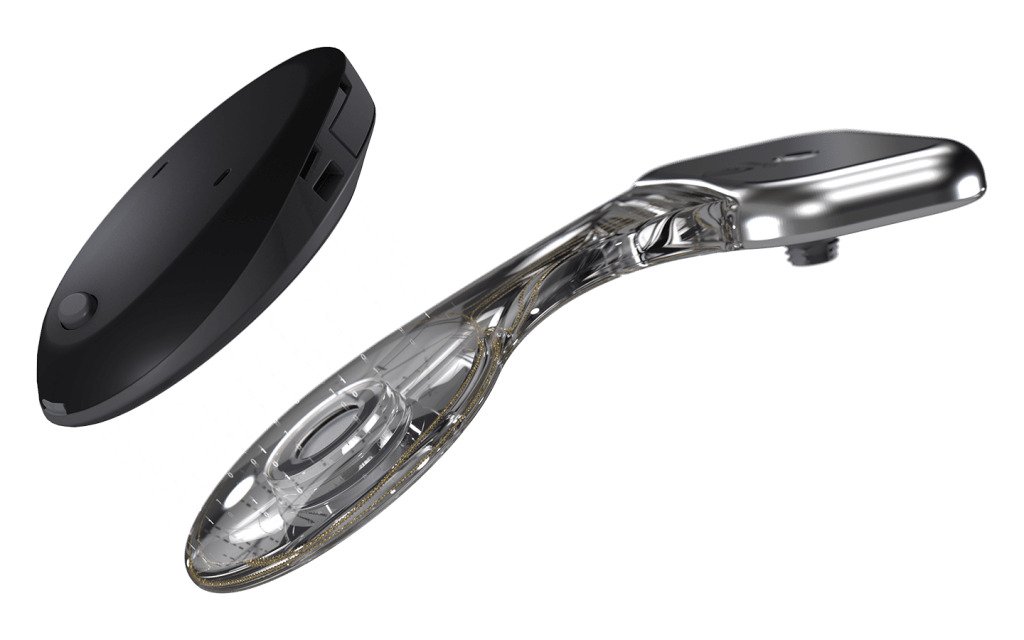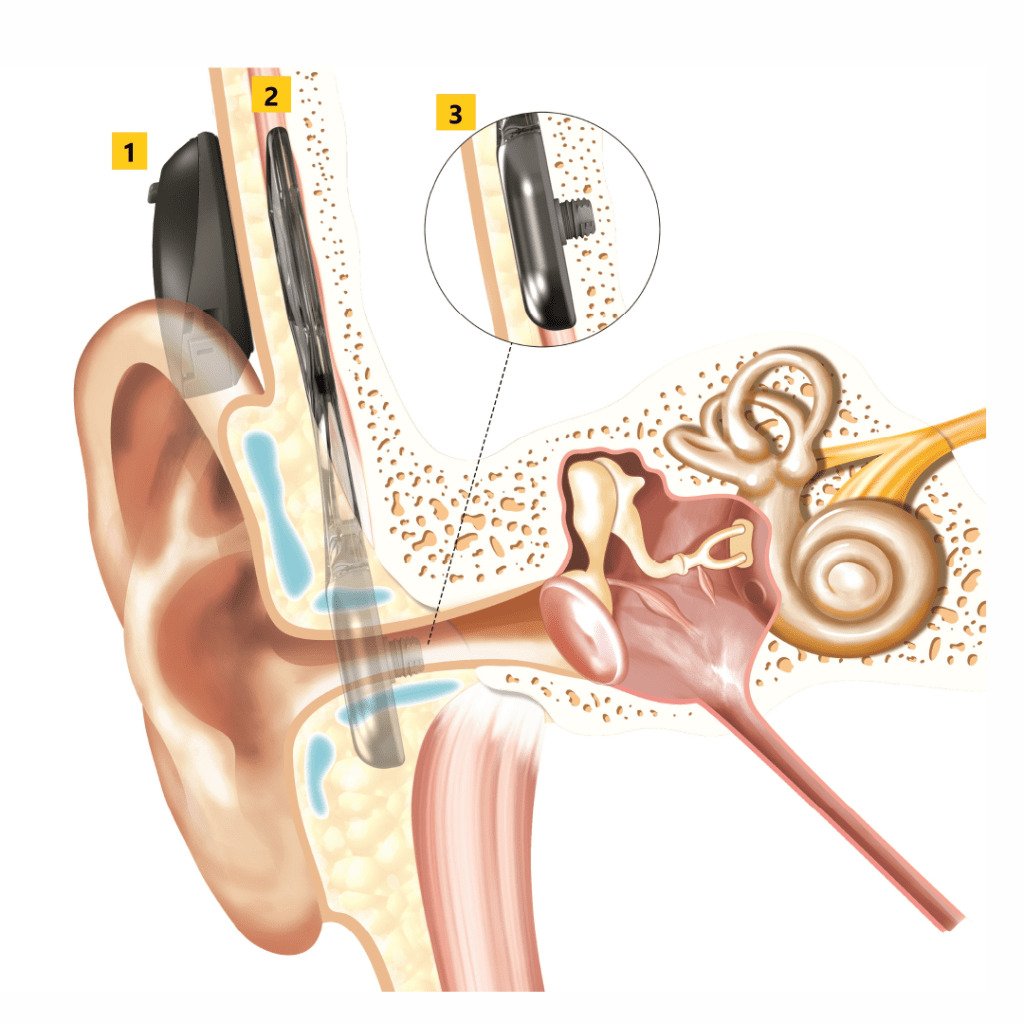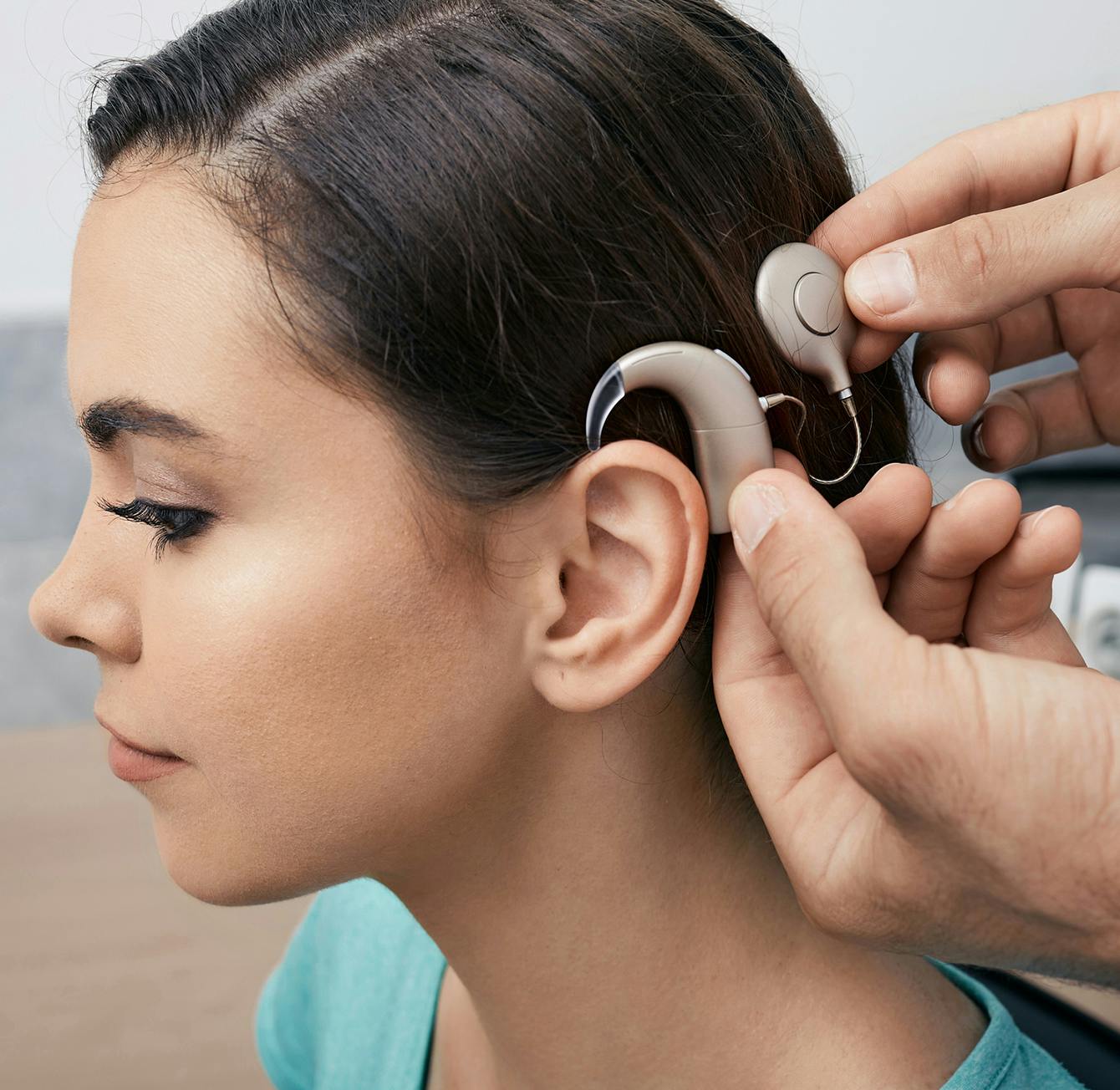
What is the Osia?
The Osia is a unique implantable device that helps people with conductive or mixed hearing loss. It can also help people with deafness on one side.
How Does the Osia Work?
This device uses a technique called direct sound conduction. There is a titanium fixture that is implanted directly into the skull that provides sound by bone conduction through the bone to the inner ear. This system does not require use of the ear canal and middle ear structures. The sound transmission for the Osia is superior to that of a standard external bone conduction device, which must transmit sound through the skin and then into the bone.
This device works the same way as the BAHA, except that there is no metal implant coming through the skin. Instead, the external processor is attached to the scalp when in use, and communicates to the internal device electromagnetically. When the external processor is taken off when not being used, there is no visible implant coming through the skin.

[Fig. 1] Osia device consists of an implantable titanium implant (small screw), internal device (silver device), and the hearing processor (black device).

[Fig. 2] Osia transmits sound directly through the bone to the inner ear. There is an external processor (1), internal device (2), and the titanium fixture that is screwed into the bone (3).

[Fig. 3] The hearing processor is seen behind the ear. The processor comes with coverings of several colors.
Benefits & Evaluation
Who May Benefit from the Osia?
Single-sided Deafness
Patients may lose hearing on one side completely for various reasons. The Osia can be implanted on the deaf side. The sound is transmitted to the good ear on the other side directly through the bone, without the need for wires or ear molds. This device can help patients hear sounds coming from the deaf side without having to turn their heads. It may also improve their ability to hear in noisy situations.
Chronic Ear Infections
Some patients with chronic ear infections cannot wear a standard hearing aid since it may worsen the infection. Since the Osia is implanted behind the ear and does not require use of the ear canal, it is an ideal device for use in these cases.
Congenital Ear Malformation
In some patients with congenital ear canal and middle ear malformations (congenital aural atresia), the hearing function cannot by reconstructive surgery. A hearing aid may not be usable because the ear canal is abnormal. The Osia can allow these patients to hear in most cases.
Children
The Osia can be implanted in children as young as 12 years old.
What is the Evaluation Process?
Patients with hearing loss undergo a full ear nose & throat evaluation in addition to testing such as audiogram and imaging such as MRI in some cases. Based on the medical evaluation, the treatment options for the hearing loss will be presented to you.

Surgery
The procedure is an outpatient surgery that takes about an hour to an hour and a half. It is usually performed under general anesthesia. The surgery consists of placement of the titanium implant underneath the skin behind the ear, and placement of the dressing.

After Surgery Care
The dressing is usually removed the next day. The patient provides local wound care at home, with application of antibiotic ointment to the site for a week. After a 1 month healing period, the hearing processor can be programmed for use. The patient may place and remove the hearing device at any time. The patient may bathe and wash their hair in the usual fashion.

